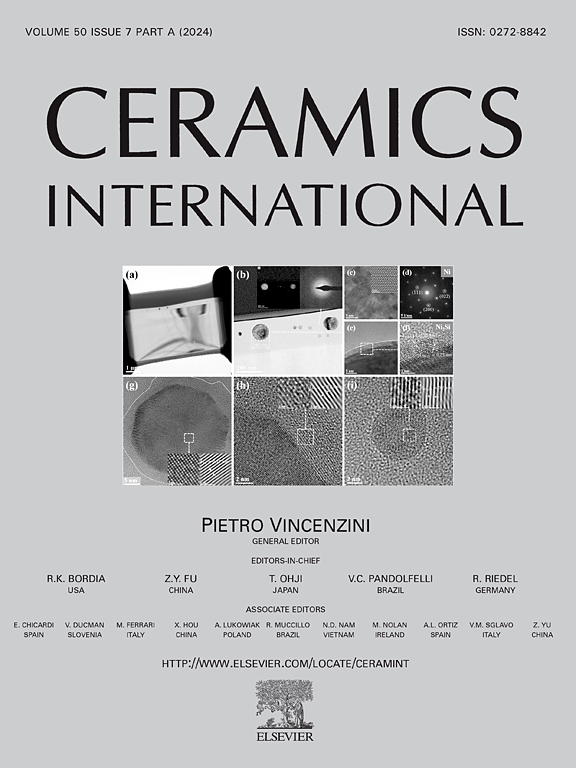电介质纤维的电场诱导排列和取向:机制、模型和实验分析
IF 5.6
2区 材料科学
Q1 MATERIALS SCIENCE, CERAMICS
引用次数: 0
摘要
电场诱导介质纤维定向是一种很有前途的控制复合材料中介质纤维取向的方法。在本研究中,我们研究了电场诱导取向的机制及其对溶液介质中DFs取向的影响。通过建模和实验分析,我们证明了电场作用于DFs悬浮物会导致光纤沿电场方向排列。由于电场和纤维偶极矩之间的相互作用,这种排列过程发生。此外,我们还探讨了影响取向过程的因素,如外加电场强度、纤维和溶液的介电常数以及纤维的特性。总的来说,电场感应校准提供了一种多功能和高效的方法,使开发具有各种工业应用定制性能的先进材料成为可能。本文章由计算机程序翻译,如有差异,请以英文原文为准。
Electric field-induced alignment and orientation of dielectric fibers: Mechanisms, modelling, and experimental analysis
Electric field-induced alignment of dielectric fibers (DFs) is a promising method for controlling the orientation of fibers in composites. In this work, we investigated the mechanisms of electric field-induced alignment and its influence on the orientation of DFs in a solution medium. Through modelling and experimental analysis, we demonstrate that the application of an electric field to a suspension of DFs results in the fibers alignment along the direction of the field. This alignment process occurs due to the interaction between the electric field and the dipole moments of the fibers. Furthermore, we explore the factors affecting the process of alignment, such as the strength of the applied electric field, the dielectric constants of fibers and solution, and the characteristics of the fibers. Overall, electric field-induced alignment offers a versatile and efficient method, enabling the development of advanced materials with tailored properties for various industrial applications.
求助全文
通过发布文献求助,成功后即可免费获取论文全文。
去求助
来源期刊

Ceramics International
工程技术-材料科学:硅酸盐
CiteScore
9.40
自引率
15.40%
发文量
4558
审稿时长
25 days
期刊介绍:
Ceramics International covers the science of advanced ceramic materials. The journal encourages contributions that demonstrate how an understanding of the basic chemical and physical phenomena may direct materials design and stimulate ideas for new or improved processing techniques, in order to obtain materials with desired structural features and properties.
Ceramics International covers oxide and non-oxide ceramics, functional glasses, glass ceramics, amorphous inorganic non-metallic materials (and their combinations with metal and organic materials), in the form of particulates, dense or porous bodies, thin/thick films and laminated, graded and composite structures. Process related topics such as ceramic-ceramic joints or joining ceramics with dissimilar materials, as well as surface finishing and conditioning are also covered. Besides traditional processing techniques, manufacturing routes of interest include innovative procedures benefiting from externally applied stresses, electromagnetic fields and energetic beams, as well as top-down and self-assembly nanotechnology approaches. In addition, the journal welcomes submissions on bio-inspired and bio-enabled materials designs, experimentally validated multi scale modelling and simulation for materials design, and the use of the most advanced chemical and physical characterization techniques of structure, properties and behaviour.
Technologically relevant low-dimensional systems are a particular focus of Ceramics International. These include 0, 1 and 2-D nanomaterials (also covering CNTs, graphene and related materials, and diamond-like carbons), their nanocomposites, as well as nano-hybrids and hierarchical multifunctional nanostructures that might integrate molecular, biological and electronic components.
 求助内容:
求助内容: 应助结果提醒方式:
应助结果提醒方式:


